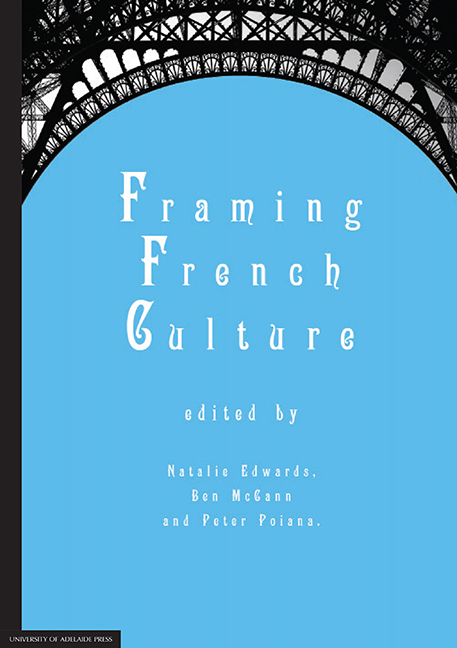Book contents
12 - Entropy and osmosis in conceptualisations of the Surrealist frame
from Part 4 - Artistic framings
Published online by Cambridge University Press: 05 February 2016
Summary
Since its inception, Surrealism has been associated with conservative art forms aspiring to a higher synthetic unity, unlike those modern art movements such as Pop Art or installation art, which have eschewed aesthetic and transcendental values in favour of the purely material and commercial. In Displaying the marvellous, Lewis Kachur writes that Breton was ‘holding fast to Surrealism as “high” art’. According to Hal Foster, ‘reconciliation is the raison d'être of Bretonian Surrealism’, whereby the binding or ‘synthetic principle’ underlying Surrealist works is Eros and ‘the uncanny is recoded as the marvellous and arrested animation is sublimated as convulsive beauty’. Although Foster's book uncovers many of the tenebrous themes which have come to define Surrealism's visual lexicon, he argues that Surrealism's general thrust was to synthesise and sublimate, attempting to create a harmonious unity cleansed of psychic tensions. Rosalind Krauss characterises Surrealist visuality as the dissolving of writing and vision, vision and presentation into ‘the higher synthesis of Surreality’. For José Pierre, Surrealist collage expresses an underlying aesthetic of association: ‘[Le poète] tentera, de la réunion des éléments discordants, de faire surgir une unité lyrique inattendue’.
One noteworthy challenge to this prevailing view of Surrealist art has been formulated by Elza Adamowicz in her work on Surrealist collage. For her, Surrealist works are chaotic, sprawling and fragmentary entities. They are
monstrous proliferating shapes both material and metaphoric, never achieving closure. The organic unity of classical statuary is replaced in these works by an aesthetics of the hypertropic detail, its euphoric complete forms giving way to the disturbing hybridity of the informe.
The observation that Surrealist works are fundamentally ill-defined, unending and ‘informe’ (or formless) — a term one naturally associates with the philosopher Georges Bataille — seems astute, since it accurately describes those aspects of the Surrealist aesthetic (based on disharmony and disunity) which have all too often been overlooked. One type of formlessness, which, I believe, also encapsulates these qualities, providing a useful theoretical model to explain how Surrealist art is realised, is entropy.
Entropy is the phenomenon of irreversible and disorderly energy exchange between two closed systems. An example of such closed systems are ice cubes melting in a warm drink, whereby the ice absorbs the heat energy of the drink, and progressively loses its molecular ‘order’ to the hotter liquid into which it dissolves. Ice and drink thus begin to blend chaotically and irrevocably into one.
- Type
- Chapter
- Information
- Framing French Culture , pp. 257 - 274Publisher: The University of Adelaide PressPrint publication year: 2015



